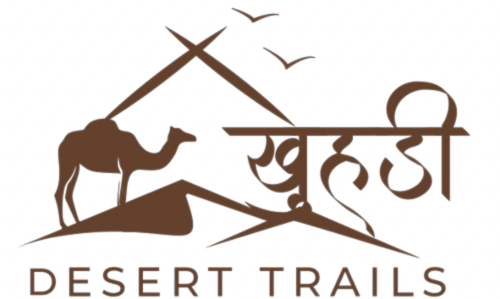When the sun slips behind the dunes, the desert wakes up in a different way. Drums echo. Skirts swirl. Stars appear as if someone switched on the sky. This guide shows you what makes desert nights special, how to choose the right experience, what to pack, and how to be a respectful guest, plus how Desert Trails can help you plan an evening that puts communities first.
Why Desert Nights Feel Magical
-
Perfect setting: Cooler air and clear skies make outdoor shows comfortable and cinematic.
-
Storytelling after dark: Many desert cultures share songs, poems, and dance in the evening, when families gather and travelers arrive.
-
Sound on sand: Percussion carries far across dunes, so performances feel immersive even in small spaces.
Where the Night Comes Alive
You’ll find unforgettable evenings across many deserts:
-
Thar Desert, India: Folk dances like Kalbeliya and Ghoomar, mirrorwork costumes, and cozy dune camps.
-
Sahara (Morocco/Tunisia): Gnawa rhythms, Amazigh traditions, tea ceremonies, and campfire chants.
-
Arabian Peninsula (Oman, UAE, Saudi): Oud, rebaba, sword or line dances, and warm Bedouin hospitality.
-
Wadi Rum, Jordan: Echoing canyons, stargazing, and intimate acoustic sets.
Tip: Pick one region for depth rather than trying to sample everything in one trip.
Performances: What to Watch For
-
Dance: Fast footwork, swirling skirts, serpentine spins, group circle dances—each with local meaning.
-
Music: Frame drums, hand cymbals, castanets, ouds, call-and-response vocals.
-
Costumes & craft: Mirrorwork, coins, tassels, indigo and natural dyes—often handmade by local artisans.
Go Beyond the Show: Hands-On Moments
-
Golden-hour walks or short camel rides to the performance area
-
Henna art, turban-tying demos, or quick craft workshops
-
Pop-up bazaars with textiles, silver jewelry, leather, and woodwork
-
Stargazing, sometimes with traditional sky lore or a simple telescope talk
Culture & Etiquette: Be a Great Guest
-
Dress modestly. Shoulders and knees covered is a safe rule in most places.
-
Ask before photos. Especially for close-ups of performers or artisans.
-
Tip fairly. Bring small notes for musicians, dancers, and guides.
-
Join gently. If invited to dance, keep movements simple and follow the lead.
Choose the Right Experience
-
Community-led shows: Smaller groups, acoustic or low-amplification, deeper cultural context.
-
Camp spectacles: Bigger stages, buffet dinners, sometimes flashy add-ons—fun but less intimate.
-
Accessibility: Ask about seating, restrooms, and walking distance on sand.
When to Go & Weather Basics
-
Best seasons: Generally October–March for India, North Africa, and much of Arabia.
-
Layering is key: Evenings can turn chilly after sunset; bring a light jacket or shawl.
What to Pack for Comfort
-
Light layers, scarf or turban, closed-toe shoes for sand
-
Refillable water bottle, lip balm, small first-aid kit
-
Headlamp or phone torch (keep light low during performances)
-
A pouch for tips and small purchases
Food & Drink to Try
-
Regional flatbreads, millet or couscous dishes, slow-cooked meats or vegetables, dates, and salads
-
Tea rituals - mint, karak, or spiced chai—are often part of the show
-
If you have dietary needs, tell your operator in advance
Travel With Care: Sustainability & Community Impact
-
Book community-led or artist-owned experiences whenever possible
-
Pay fair prices; avoid bargaining that undercuts artisans
-
Leave no trace, pack out litter, keep noise and lights low after hours
-
Share transfers with others to reduce vehicle impact on dunes
Safety & Comfort Tips
-
Choose licensed operators with clear emergency plans
-
Bring any personal medication and note local clinic locations
-
Stick to marked areas; dunes shift and visibility drops fast at night
-
On windy nights, protective glasses or a scarf can help with sand
A Sample Evening Itinerary (You Can Tweak This)
-
4:30 pm: Arrive at camp; tea and orientation
-
5:00 pm: Dune walk or short camel ride at golden hour
-
6:00 pm: Craft or costume demo; casual photo time
-
6:30 pm: Sunset viewing
-
7:00 pm: Music Set I (acoustic) + storytelling
-
7:45 pm: Dinner under the stars
-
8:30 pm: Dance performance + optional guest participation
-
9:15 pm: Drum circle or stargazing talk
-
10:00 pm: Quiet hour; return or overnight in camp
Budgeting & Booking Smarts
-
Know what’s included: Transfers, dinner, drinks, performances, camel ride, stargazing, ask for a clear list.
-
Small vs. large groups: Smaller groups cost more but usually offer better viewing, sound, and cultural context.
-
Peak season: Book early for weekends and holidays; weekdays can be calmer and sometimes cheaper.
Photography in Low Light (Simple Settings That Work)
-
Use a wide-aperture lens (f/1.8–2.8) or “Night” mode on phones
-
Keep shutter faster for sharp portraits; slow it slightly for artistic motion blur on spinning skirts
-
Avoid flash unless performers agree; it can distract and wash out color
-
Focus on details—hands on drums, embroidery close-ups, tea being poured
Why Book With Desert Trails
Desert Trails curates evenings that put culture and community first. Here’s what to expect when you book:
-
Authentic performances: We prioritize artist-led groups, fair pay, and small-format shows where you can actually hear the instruments and see the craft details.
-
Community partnerships: A share of each booking goes back to local cooperatives, musicians, and craft collectives.
-
Comfort without excess: Proper seating, clear sightlines, and good food—without turning the desert into a theme park.
-
Responsible logistics: Shared transfers, low-light staging, and leave-no-trace practices to protect the dunes and night sky.
-
Custom touches: Dietary notes, accessibility requests, private craft demos, and photography guidance—all arranged in advance.
Ready to hear the drums roll across the dunes? With thoughtful planning and the right partner, your desert evening can be both magical and meaningful—supporting the artists who keep these traditions alive while giving you a night you’ll remember long after the stars fade.






